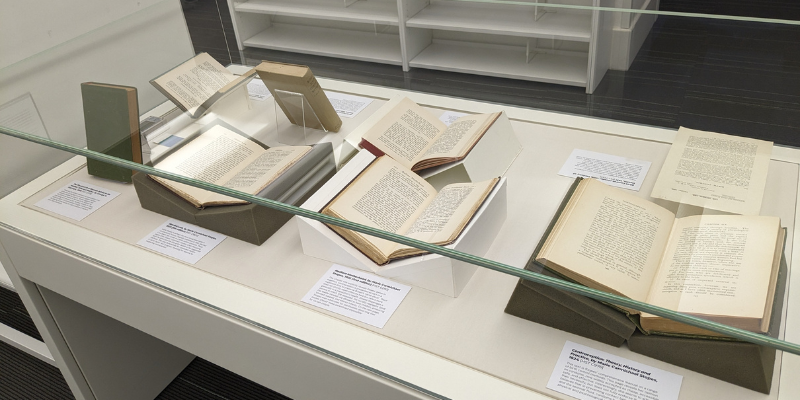
Each year, it is the job of the Library’s Graduate Trainees to make this case their own by curating a small display using items from our on-site historic collections. When the time came for me to compile a case of my own, I was excited, having thought it was a fab element of the training from the time I applied for the job. I was really interested in what sort of historic materials the RCN might hold about reproductive health, so I looked for sources related to gynaecology and contraception. I pursued this topic due to a personal interest in the impact of contraception on health and wellbeing, and because I thought it would be appropriate to explore in a nursing library. Nursing staff, more so than doctors or other health professionals, are so often on the front line of delivering contraceptive care to patients.
I soon found that the library collection included several original twentieth century English and American volumes, concerned with contemporary theories of contraception. However, I also discovered that most of those books were written by Marie Stopes, one of the most recognisable figures in contraceptive history. I knew that any history of contraception I could try to represent through my display could only be partial; firstly, because that story would be conveyed through just eight objects, all textual, and eight short accompanying captions; and secondly, because the image I was presenting, of the rhetoric around birth control from 1920 to the 1960s, was heavily filtered through the words of one very invested woman. Rather than attempt to avoid or ignore this, I decided it was best to lean in; to think about why and how it came to be that so much of the surviving literature was hers, and to actively explore the issues raised by looking at contraceptive advances through this specific lens.
One thing that quickly became very clear about these early conversations on birth control is that, as late as 1960, contraception is not presented as an advance that gives people with uteruses the personal choice to remain childless. For Stopes, and the other voices represented in my small exhibition, the purpose of contraception is primarily to lengthen the time between pregnancies; it is marketed as a solution to prevent new mothers from conceiving whilst their children are still in infancy. Several texts mentioned concerns about the potential impacts of pregnancy on the quality of breast milk, which could affect the health of the already-nursing infant. Though it is now widely established that it is safe to breastfeed while pregnant, this seemed to contribute significantly to the belief that pregnancies should be delayed. Whether the emphasis was on breast milk, or on the health of the mother, contraception is described as acceptable where it enables parenting another - preventing further motherhood for the sake of motherhood. This is a far cry from most modern discourse about contraception as an advance that has enabled greater freedom and equity for women and people with uteruses, by providing complete control over ‘their bodies’ and ‘their choices’.
However, Marie Stopes’ specific political positioning has an even more significant impact on the advocacy for contraception presented in her texts, and therefore in our display. I felt it was crucial to engage with this, and to select some sources that demonstrate the troubling beliefs that guided her. A vocal supporter of the eugenics movement, she was motivated not only by a woman’s right to choose, but by racist, ableist, and classist attitudes about social ‘progress’. Stopes not only advocated for the normalisation of birth control for new mothers, but suggested there were moral imperatives for some types of people not to reproduce, even going so far as to suggest that it was socially responsible to sterilise people belonging to some ethnicities, or those with disabilities. Her unacceptable ideology highlights how many medical advances, even those with the potential to improve people’s lives and contribute to equality of opportunity, also have the potential to enact forms of discrimination and abuse.
With the sheer volume of writing she produced, her insistence on putting her case to important people, and the attention she has attracted for her beliefs, it is not surprising that Marie Stopes is as famous as she is. Her prominence and significant influence led to some anti-contraception commentators referring to the very practice of using birth control as ‘Stopery’, as in one Roman Catholic text I included in the display. Therefore, it is vital that we properly examine her advocacy and what she truly stood her, not despite, but because of, her beliefs.
Contraception has been used as a key marker of the progress of feminism. However, it is important to remember that globally, not all people are equally empowered by this progress, and reproductive rights remain under threat. I hope that by touching on this complicated history, my project serves as a reminder of the importance of inclusive and ethical access to contraception today.
You can view the display, entitled ‘Studying Stopery: a history of contraceptive controversy’, on the Lower Ground Floor of the Library and Heritage Centre, at 20 Cavendish Square.






